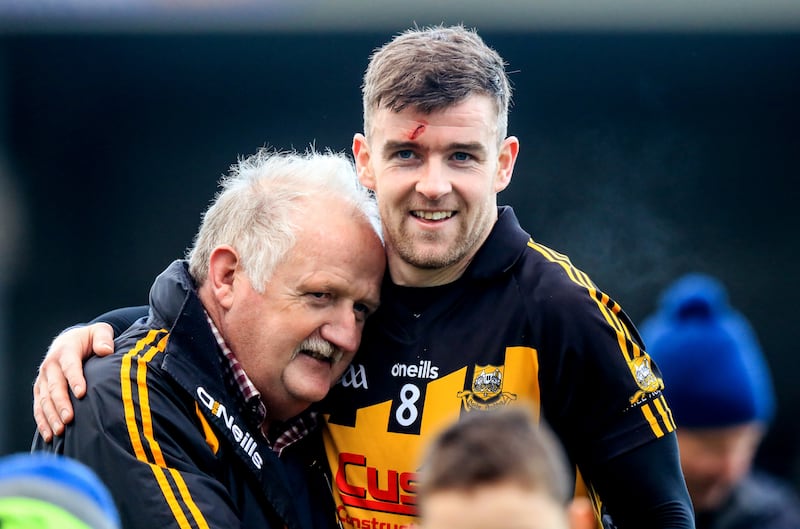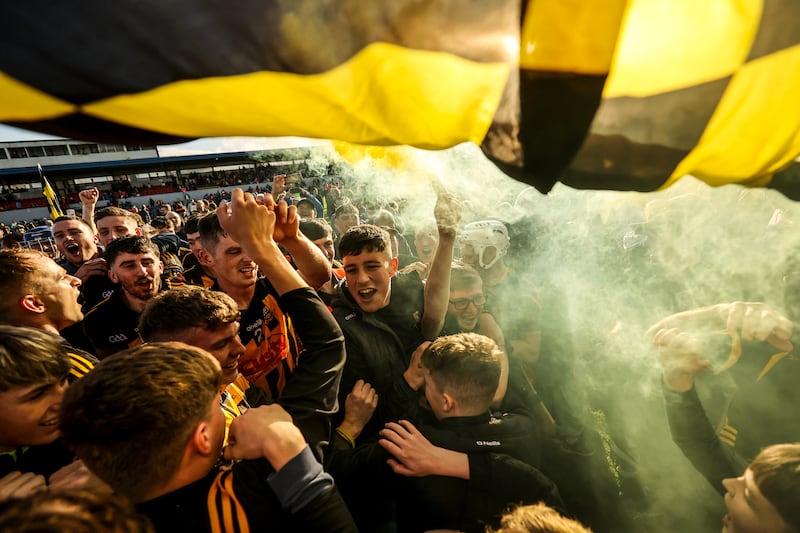Considering they have such a grip on Clare, sharing a duopoly of the title with Sixmilebridge for nearly a decade, and are the only Munster champions from Clare since the turn of the century, Ballyea might surprise the casual onlooker by not being a little more highly rated as they get ready to contest Saturday’s provincial final in Thurles.
Times move on, though, and this weekend’s opponents are Ballygunner, All-Ireland champions, and the team that buried them a year ago in the Munster championship.
Four years ago is maybe a more encouraging precedent when it took a late and rare goal by Philip Mahony to earn the Waterford champions extra time, which required two periods before Ballyea narrowly lost.
A year ago, they didn’t have Tony Kelly available because of an injury. The teenage Hurler of the Year from Clare’s All-Ireland win in 2013, he has in recent seasons been the most consistently spectacular hurler in the country, winning an All Star for the past three seasons even though his team didn’t qualify for an All-Ireland in any of them.
READ MORE
Can his availability tip such dramatically tilted scales as opposed to balancing them a bit more respectably?
Then there is the matter of form. While Ballygunner were taking on and beating former All-Ireland champions Na Piarsaigh in one semi-final, described by neutrals as being of intercounty quality, Ballyea were in Ennis, facing St Finbarr’s of Cork, who were competing in their first Munster championship since 1993.
Despite being down to 14 for nearly the entire match, the visitors could have won and only failed to force extra time when a 65 drifted wide. Again, Kelly was at the heart of the winning push.
There’s no doubting his impact on the club. Paul Flanagan, an All Star corner back nomination after a great Munster campaign with Clare, spoke during the week about how instructive it was for a defender to have to practice on such an illustrious team-mate.

“If ever you needed a good grounding in terms of where you’re at, he’ll put you to the pin of your collar every time. I’ve learned a huge amount from him, just being in his company a lot more, training with him a lot more.
“That mentality that he has to just constantly improve himself and constantly immerse himself in what he is doing and it never seems to be an onerous task for him . . . I find that fascinating. He doesn’t see practice as an onerous task that he has to do, which is great to see.”
Ballyea shares a parish with Clarecastle and is just south of Ennis on the way to Kildysart. It’s a small place but paradoxically has a large catchment of players because of the number of football clubs for whom it is the obvious hurling outlet for dual players.
Pearse Lillis is from Cooraclare, former Ireland international rules player Gary Brennan from Clondegad and Stan Lineen from Kilmihil – all good footballers and proven dual players.

But they also have hurlers. Aside from Kelly and Flanagan are others who have played at the top level, like Jack Browne and Niall Deasy.
t was good enough to lift them to a Munster title and All-Ireland final appearance six seasons ago against Dublin’s Cuala but since then, there hasn’t even been a provincial final.
How does a team approach opposition that beat them so heavily the previous season? Is it a matter of apprehension or a motivation to make amends or even a complete dispelling of pressure, going in as such remote underdogs?
Flanagan, a schoolteacher, has a long-standing interest in psychological preparation and mental conditioning. He is asked whether the daunting precedent triggers anxiety or a sense of opportunity.
“There’s always the chance [of a beating] and we’d be outsiders in terms of Munster. Anyone at the Gaelic Grounds last week for Na Piarsaigh and Ballygunner – I met a couple of people at school who would be big hurling men and they would have said, ‘No offence now but I think we’re going to go to the Gaelic Grounds at the weekend’.
“I understand that as well as anyone. I think, look, you can always play the underdog card and that can be a little bit clichéd at times. I suppose it comes back a little bit to why you’re doing something and that internal motivation that’s a little bit deeper.
“I suppose you’re representing Clare now. You’re representing your club obviously. We don’t need any reality check in terms of what Ballygunner did to us last year in Ennis. A 17-point beating is enough to get your ears up and probably try to get as prepared as possible.
“Every opposition is different and I find the hardship of hurling is that it is so fickle. It can swing very quickly and we realise that and we know that we have to improve an awful lot to stay with these guys next weekend.”















